Cities are considered to be at the forefront of sustainability practices (Rosenzweig et al., 2010) aimed at addressing the impacts of global environmental change and socio-economic inequality. Recent developments in research on urban resilience promote ecological responses to climate change and other urban stressors (McPhearson et al., 2016; European Commission, 2015; Royal Society, 2014). Nature-based Solutions (or NBS) encompass a broad range of such ecological responses.
Indian Prime Minister Modi’s Atal Mission for Rejuvenation and Urban Transformation (or AMRUT) proposes to rejuvenate the growing number of large cities in the country through infrastructure as well as management reform-based interventions. Unfortunately, the policy and planning community for Indian cities has yet to integrate the potential of NBS for building resilience and achieving sustainability goals.
Development of literature and knowledge on NBS brings together and builds on previous knowledge in biodiversity and ecosystems, sustainable urban development, natural resource management, and climate change response (European Commission, 2015). At the core of the practice of NBS, however, is the need to rethink the link between people and nature in cities, in order to address problems of urbanization. At a theoretical level, it may require redefining ecology in cities to an ecology of and for cities (McPhearson et al., 2016).
NBS tools relevant to cities include restored and constructed wetlands, preserved urban forestry, and greenfield afforestation and greened brownfields; as well as greening of grey surfaces such as rooftops and walls and natural flood control techniques (Kabisch et al., 2016; European Commission, 2015). NBS could be considered “an umbrella term for all related applications of ecosystem services, natural capital, and ‘lessons from nature’” (Potschin et al., 2015: pp2).
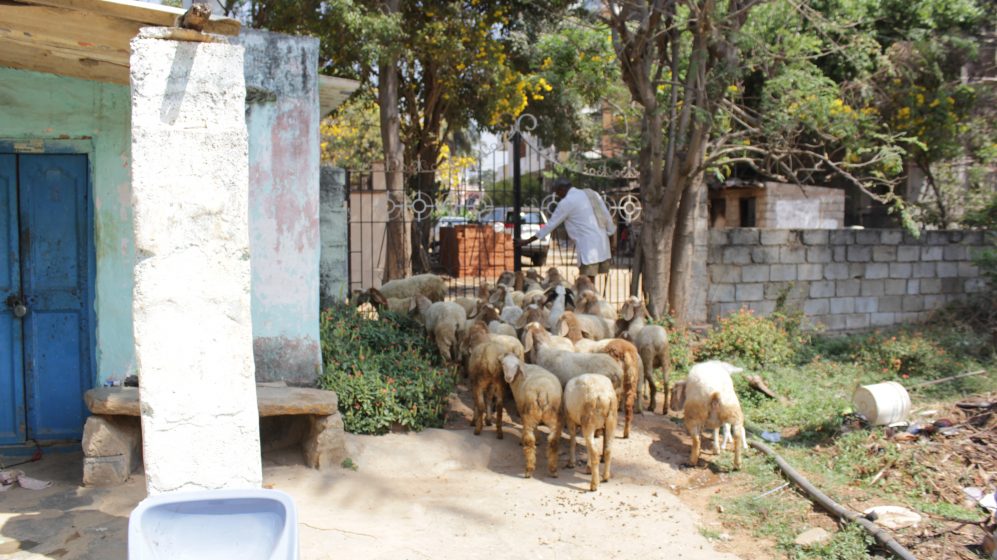
City-scale NBS tools are predominantly from European cities (see, for example, urban ecologist Dagmar Haase’s blog on the topic). In addition, practitioners from complementary fields such as landscape architecture also study city-based NBS from their particular perspectives (see, for example, a recent survey of cities from across the world which are re-inventing their relationship with their rivers).
The concept of NBS still needs to be recrafted for it to have value in application and relevance to policy in the Indian context. Currently, people in India study the fractured relationship between city residents and urban nature from the lens of urban commons (see Unnikrishnan and Nagendra, 2013; Narain and Vij, 2016) or the failure of environmental governance (Purushothaman, 2016). There is a recent shift towards acknowledging the role of nature in cities for resilience-building (such as wooded groves of Bangalore), in particular to inform urban planning and policy-making in India. The International Union for Conservation of Nature recently convened a workshop bringing together Delhi’s state government; the national Ministry for Environment, Forests and Climate Change; a range of state-level agencies as well as private actors to collectively plan towards using urban biodiversity as a means for promoting NBS. This will be an interesting space to watch, both in terms of its extension to other mega cities and medium sized cities in India, as well as the way in which NBS is contextualized to Indian culture and values.
A compendium of solutions for resilient cities
The Urban Climate Change Research Network (or UCCRN) is a coalition of international researchers that was formed at the C40 Large Cities Climate Summit in 2007 to establish the status and understanding of climate response at the city level. UCCRN’s first assessment report, ARC3, was released in 2011, and was lauded by the global scientific community and city leadership for its thorough assessment of the effect that climate change could have on public health, local infrastructure, and economic vitality of city-regions in so-called developed and developing countries.
The UCCRN recently launched its second assessment report (ARC3.2), supported by more than a hundred case studies from the developed and developing world, showcasing climate mitigation and adaptation efforts of cities from across Europe, Latin America, Africa, Australia, and Asia. City initiatives cover a range of services and sectors—transportation, public health, housing, energy security, water management, solid waste, and disaster preparedness. Re-conceptualization of city systems is recommended in order to achieve the dual goal of greenhouse gas reduction as well as climate adaptation, and to move cities towards environmental sustainability, greater equity, and resilience against disasters. A large number of such recommendations are centered on NBS.
For example, Jerusalem is predicted to face higher temperatures and moisture stress, exposing the city’s flora and fauna to adaptation challenges. The city has responded with the establishment of the Gazelle Valley Conservation Park, an initiative that can rally citizens and businesses towards further nature-based adaptation actions. Urban authorities in Colombo, Sri Lanka recognize the potential of the inter-connected system of wetlands in the city for natural flood control. Researchers are undertaking scientific assessment of future climate risks to the city through downscaling of climate projections in order to garner political support for conserving urban wetlands.
The ARC3.2 report represents a larger pool of cities (ranging from mega to small in terms of population size) than its predecessor did, and offers much for city leaders from developing countries to consider. However, temporally truncated case studies tend to glaze over the historical developmental and governance challenges urban settlements of developing countries, such as India.
Indian cities such as Bangalore, Surat, Hyderabad, and Gorakhpur are listed in this compendium of approaches and initiatives for urban planners, city officials, policy makers, and city leaders to learn from and potentially adopt. Researchers studied Bangalore along with the cities of Santiago, Chile, and Los Angeles to understand how different cities utilize adaptation options to address shortages in water supply. City planners’ view of a city—as a closed system with limited, external inputs (such as the Cauvery River); or an open system with multiple water supply options that exist within city boundaries (such as groundwater that can be stored in lakes and retained in wetlands or rain water that can be harvested through the built environment)—underpins these options. These researchers have found the position of a city in the river basin to be a major determinant of water adaptation strategies adopted.
Gorakhpur, one of the most flood-prone districts in Northern India, has focused on building the capacity of local authorities to understand local impacts of climate change in the Gangetic plains. City officials are able to consider and re-allocate funds towards climate compatible development, and thereby proactively minimize loss of life and property to frequent and extreme flooding events.
Surat, another flood-prone city in Western India, fostered collaboration among city stakeholders to get involved in the management of water in the upstream reservoir on a regular basis (for more details, read this article on Citiscope). Recognizing the contribution of poorly planned development to incidents of urban flooding, Surat’s Municipal Corporation no longer permits builders to construct on the floodplain.
A critical review of the Indian case studies shows that although planning approaches for Bangalore have been cited, they are yet to translate into a difference in the treatment of nature in the city. Gorakhpur and Surat were able to implement NBS largely due to the targeted support of the Asian Cities Climate Change Resilience Network, a five-year initiative of the Rockefeller Foundation.
In high growth cities, which provide little in the way of quality of life for majority of their poor and disadvantaged households, NBS for climate change may not appear too urgent (as compared to addressing basic services backlog), or attractive (for ease of implementation, as compared to engineering-driven solutions), unless backed by public policies that recognize the potential for NBS.
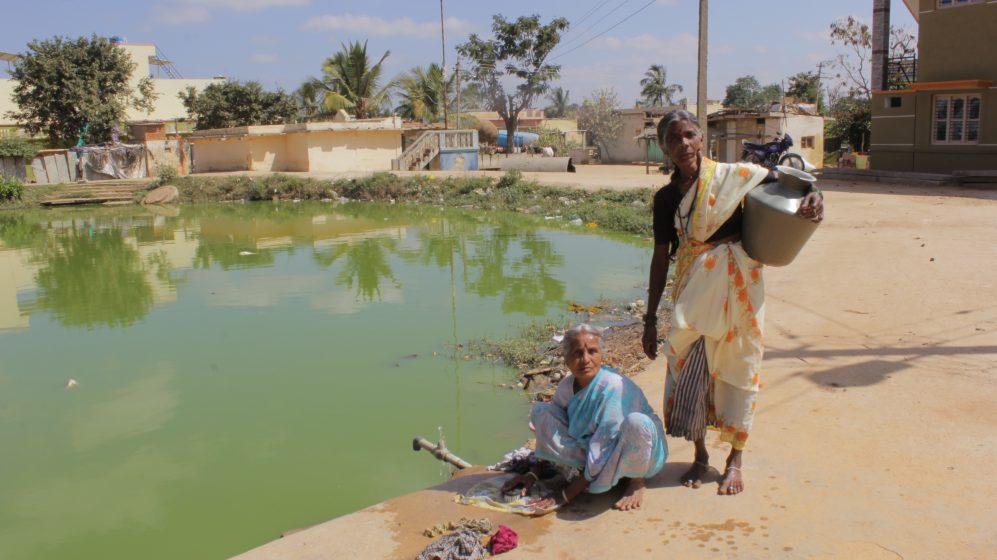
A mission for urban transformation
In 2015, the Ministry of Urban Development, Government of India launched AMRUT, mainly to provide universal coverage of basic services and civic amenities and reduce pollution in cities, as a national priority. While the AMRUT mission courageously aims for urban transformation, it does so in the absence of a grounding in what such an endeavor would require, both in terms of socio-economic equity, as well as a re-connection with nature. This is one city-specific policy that could unlock the potential of NBS in Indian cities; but in its current articulation it pays lip-service to nature in the city as “green spaces and parks”!
The AMRUT mission is divided into eight components of water supply, sewerage, septage, stormwater drainage, urban transport, green spaces and parks, administrative reforms (capturing elements of mission governance), and capacity building. Aspects of sustainability are found in each of the components, but are not necessarily linked to each other. For example, the ‘water supply’ component includes rejuvenation of water bodies for drinking and recharging of groundwater. However, the role that urban lakes play in maintaining biodiversity and regulating urban floods is not acknowledged.
Recommendations for green spaces and parks within AMRUT are limited in their vision. Urban commons are valuable not just for recreational purposes, but also for their cultural, associational, and spiritual value. The instrumentality of each component is important, because that will determine whether a park or a lake becomes or stays a living part of the urban ecology, or functions as a fenced green island amidst a concrete jungle.
A limited role for resilience in AMRUT
Within the AMRUT mission, resilience is understood in the context of securing projects against potential disasters.While the intention is to attend to the vulnerability of the poor and the disadvantaged, the potential for building the city’s resilience at several interlinked scales remains unaddressed. Waste recycling and reuse, as well as reduction in unaccounted water in supply networks, is encouraged, but mostly through engineering and structural norms applied at the design stage of the “service level implementation plan”.
AMRUT guidelines recommend building resilience against urban floods through construction and maintenance of bulk infrastructure such as stormwater drains. Technical solutions, which are capital intensive and highly disruptive of urban functions during their construction phase, may be deemed appropriate at the scale of mega cities. However, smart, low-cost solutions also exist that preserve and build on existing natural assets in small and medium-sized urban settlements of India, as well as in rapidly urbanizing peripheries of big cities.
For example, in place of a higher capacity stormwater drainage network, natural flood control techniques—an NBS tool—could be utilized. Cities could mandate a balance of porous surfaces and paved surfaces on the ground that would reduce stormwater run-off substantially. These measures could be accompanied by enforcing wetland conservation and strict prohibition of formal and informal settlements on flood plains and lake beds.
Construction over lake beds, wetlands, and in dangerous proximity to a river’s course are leading causes of flooding in both coastal and non-coastal cities and towns in India (for example, the Uttarakhand floods in 2013, Srinagar floods in 2014 and 2015, and Chennai floods in 2016). Designing stormwater drains for the most extreme rainfall event is wasteful of land, building materials, and financial resources in multiple ways.
Multiple risks to urban resilience
At a recent orientation programme conducted with officials stationed at urban local bodies in Rajasthan, an arid to semi-arid state or province of India, Indian Institute for Human Settlements faculty learnt about the practical limitations of translating a mission for urban transformation in water-constrained cities of India. A majority of the officials expressed that the two biggest threats faced by their cities (such as Jaipur, Bikaner, Bharatpur and Ajmer) were water scarcity as the urban population expands and, not surprisingly, urban floods as the city’s built-up footprint grows.
The officials were quick to identify additional problems of urbanization, such as increased health risk due to human agglomeration in under-serviced and hazard-prone locations in cities and their vicinities. They also shared that the people most at risk in these locations are those without access to modern medicine or private health care.
Multiple deprivations further erode the capacity of the poor and disadvantaged to recover from extreme events such as heat waves and urban floods. The pattern of urbanization being followed in India means that natural assets within older, established core parts of the city are becoming green islands as cities build over lakes and water bodies, urban forests become dumping grounds, and highly productive, peri-urban agricultural land is converted into special economic zones (Karle SEZ, North Bangalore among others), with dubious societal benefits. All these aspects of urbanization render our cities and their inhabitants vulnerable to urban floods and water scarcity. Vulnerabilities which result from severe disruptions can surely not be addressed solely through linear solutions such as the construction and maintenance of stormwater drains, or the development of fenced-in green spaces and parks!
A ray of hope
As it stands, AMRUT is aspirational towards building urban resilience, but its transformational agenda seems to be focused solely on administrative reforms. The new urban mission is too limiting in the way that it relegates resilience to dealing with urban flood events. It also fails to leverage the potential of grounded NBS to address both local environmental change, as well as socio-economic inequity.
AMRUT guidelines require that projects under this mission seek convergence with the Smart Cities Mission, Heritage City Mission, Digital India, and Housing for All, among other nationally promulgated missions aimed at urban development. The hope is that cross-fertilization with pre-existing schemes and programmes will enable ‘learning from the past’ to inform a mature interpretation of urban resilience. In particular, building the capacity to work with nature at multiple scales (households, city infrastructure and regional networks). Successful initiatives from cities such as Gorakhpur, Indore, and Surat could provide a useful resource.
Given the high level of economic inequality in the country, intensified by successive, devastating droughts in recent years, a rethink of the human-environment relationship is required in India. As hundreds of cities across India adopt AMRUT, a huge opportunity for NBS may be lost unless city managers are encouraged to work with local residents, across social and economic classes to understand how nature already exists in their midst in the forms of urban forestry, wetlands, and urban agriculture; and city-makers work with these forms to increase urban resilience. City solutions that can thrive and regenerate without capital-intensive inputs from state agencies might help define the New Urban Agenda, which will be declared at the upcoming global conference for sustainable urban development, HABITAT III, in October 2016.
Cities which are able to embrace nature by weaving built infrastructure with green infrastructure will emerge as winners in the long term. City-scale NBS are informed by the condition and potential of nature in a city, dynamics of demographic and land-use change, lived vulnerability to extreme events, and projected impacts of climate change. Within Indian cities, NBS will need to be adopted at the stages of design (of buildings and fixtures) and planning and upgrade (of new and existing settlements).
Sumetee Gajjar
Bangalore
References
European Commission, 2015. Nature-Based Solutions & Re-Naturing Cities Final Report of the Horizon 2020 Expert Group on Nature-Based Solutions and Re-Naturing Cities. Available at: ec.europa.eu/research/environment/pdf/renaturing/nbs.pdf
Kabisch, N., N. Frantzeskaki, S. Pauleit, S. Naumann, M. Davis, M. Artmann, D. Haase, S. Knapp, H. Korn, J. Stadler, K. Zaunberger, and A. Bonn. 2016. Nature-based solutions to climate change mitigation and adaptation in urban areas: perspectives on indicators, knowledge gaps, barriers, and opportunities for action. Ecology and Society 21(2):39. Available at: http://dx.doi.org/10.5751/ ES-08373-210239
McPhearson, T., Pickett, S., Grimm, N., Niemelä, J., Elmqvist, T., Weber, C., Haase, D., Breuste, J., Qureshi, S. (2016). Advancing Urban Ecology toward a Science of Cities, BioScience, 66(3), 198–212
Narain, V. and Vij S., 2016. Where have all the commons gone? Geoforum. Volume 68, January 2016, Pages 21–24.
Potschin, M., Kretsch, C., Haines-Young, R., E. Furman, Berry, P., Baró, F., 2015. Nature-based solutions. In: Potschin, M. and K. Jax (eds): OpenNESS Ecosystem Service Reference Book. EC FP7 Grant Agreement no. 308428. Available at: www.openness-project.eu/library/reference-book
Purushothaman, S., Patil, S., Lodha, S. 2016. Social and Environmental Transformation in the Indian Peri-Urban Interface – Emerging Questions. Working Paper No 1. January 2016. Azim Premji University.
Rosenzweig C, Solecki W, Hammer SA, Mehrotra S. 2010. Cities lead the way in climate-change action. Nature 467: 909–911.
Royal Society, 2014. Resilience to Extreme Weather. Royal Society Science Policy Centre Report no. DES3400.
Unnikrishnan, H. and Nagendra, H., 2013. Privatization of commons: impact on traditional users of provisioning and cultural ecosystem services. In 14th Global International Association for the Study of the Commons Conference, Kitafuji, Japan.

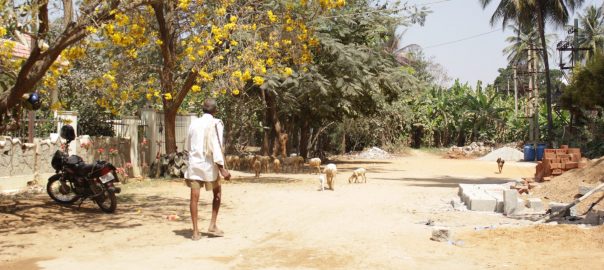






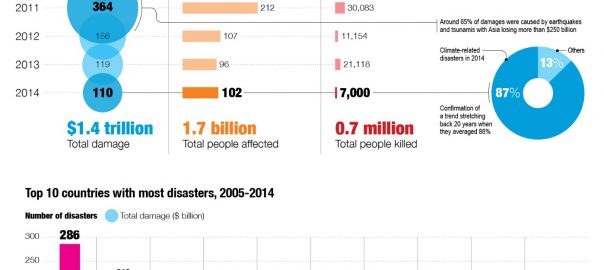
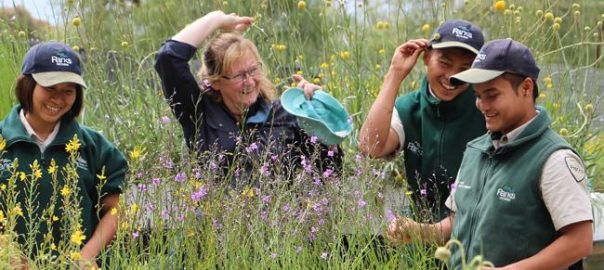
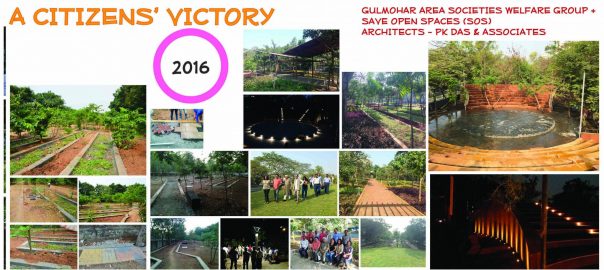

Add a Comment
Join our conversation